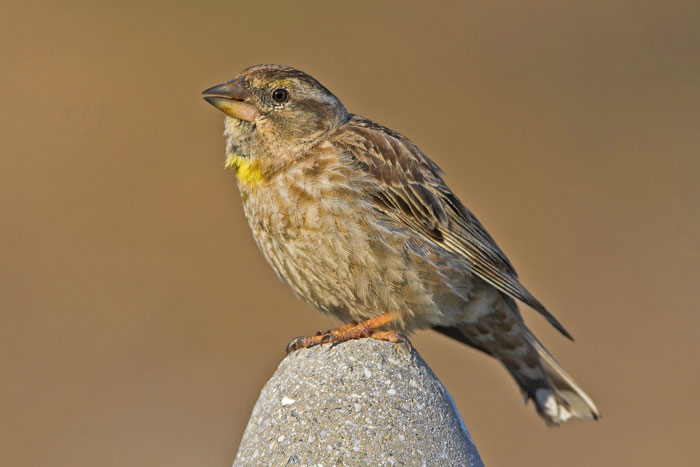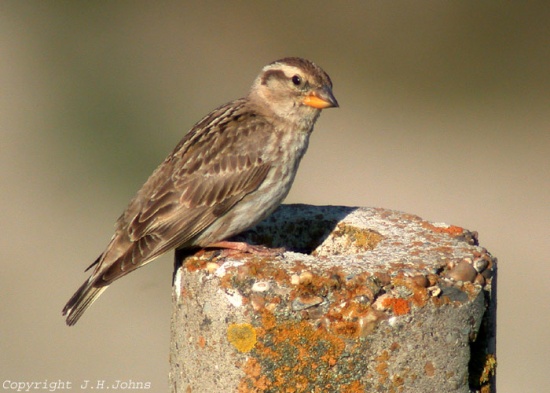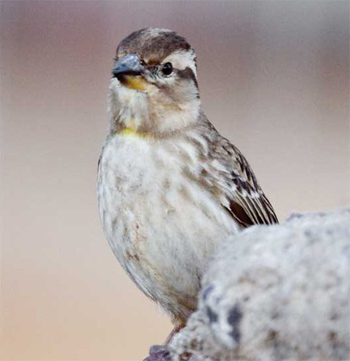
Petronia petronia
TAXONOMY
Petronia petronia Linnaeus 1766, northern Italy. 10 subspecies.
OTHER COMMON NAMES
French: Moineau soulcie; German: Steinsperling; Spanish:
Gorriуn Pintado.
PHYSICAL CHARACTERISTICS
5.5–6.0 in (14–15 cm); 1.1–1.4 oz (28–40 g). Bulky, grayish
brown sparrow, heavily streaked and spotted, head boldly
striped. Bill noticeably heavier than those of true sparrows.
DISTRIBUTION
Has a wide but scattered range from the Canary Islands and
Madeira, through the Mediterranean region east to western
China.
HABITAT
Generally a bird of open, treeless country from semi-desert to
rocky slopes up to 17,400 ft (5,300 m). Comes into cultivated
areas, particularly large open fields and even small human settlements.
BEHAVIOR
Outside the breeding season collects in compact flocks of up to
a few thousand birds, often with finches. Rather wary, flying
off when disturbed. Spends much time on the ground where it
runs about actively.
FEEDING ECOLOGY AND DIET
Mainly feeds on the seeds of grasses and low herbs, but also on
a wide range of invertebrates in the spring and berries in the
autumn. Young are mainly fed on insects and insect larvae, taking
somewhat larger prey than the true sparrows.
REPRODUCTIVE BIOLOGY
Breeds mostly in loose colonies with the nests in crevices in
rocks and trees, also in buildings, occasionally occupied ones.
Two clutches of four to seven eggs are laid. Incubation 11–14
days, fledging 18–19 days. Female takes most part, though
male occasionally feeds the nestlings.
CONSERVATION STATUS
Not threatened. Some withdrawal from northern parts of range
in Europe and Atlantic islands has occurred in twentieth century,
but is still a common species.
SIGNIFICANCE TO HUMANS
Though occasionally causes some damage to crops, has little
impact on humans.
Photo Gallery of - Rock sparrow




 Animalia Life
Animalia Life